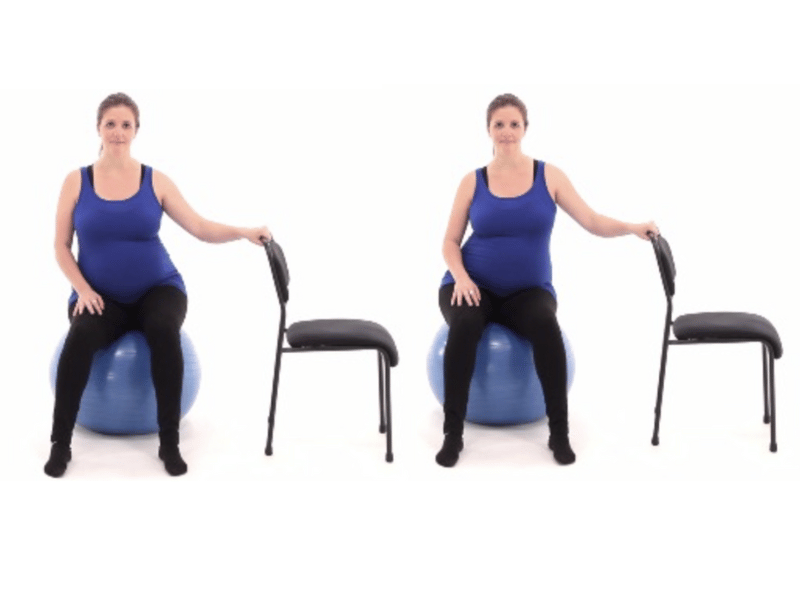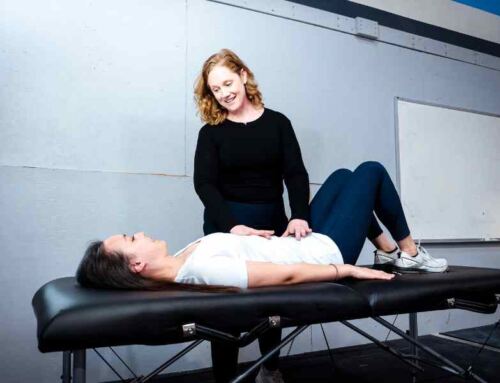Round Ligament Relief During Pregnancy
Pregnancy is a beautiful journey with many physical changes. Unfortunately, some of these changes can bring discomfort. One common issue faced by expectant mothers is round ligament pain. This sharp or aching sensation typically affects the lower abdomen or groin area. Good news, you don’t have to just suffer through these aches and pains until your pregnancy is over! There are ways to alleviate your symptoms through physical therapy and mindful movement.
What Are the Symptoms?
- Sudden, sharp, or dull ache in the lower abdomen or groin, especially when making quick movements like standing up, rolling over in bed, or coughing.
- Pulling sensation on one or both sides of the abdomen.
- Cramping (typically lasts for a few seconds or minutes).
What Is the Round Ligament?
It’s a pair of cord-like structures that attach the uterus to the front of the pelvis. As the baby grows, especially in the second trimester, this ligament is stressed from the task of supporting your growing uterus.

How Can You Get Relief?
Round Ligament Massage: Using your fingertips to apply gentle pressure around the areas of pain working up the length of the ligament in small circles.
Gentle Mobility
Hip Flexor Stretch: Stretching helps improve the flexibility of the hip flexors, which can relieve tension in the surrounding muscles and connective tissues.
Here’s how to perform the stretch:
- While sitting on a yoga ball, extend your right leg back until you feel a stretch in your right hip flexor.
- Hold the stretch for 30-60 seconds.
- Repeat on the other side.
Pelvic tilts: A great exercise to relieve tension in the lower abdomen and improve overall pelvic mobility. They can be done using an exercise ball or sitting in a chair (as long as it’s comfortable during pregnancy).

Here’s how to perform a pelvic tilt:
- While sitting on a yoga ball, place your hands on your hips to feel the movement of your pelvis.
- Gently tuck your pelvis under, rounding your lower back, and then reverse the movement by tilting your pelvis forward and arching your back slightly.
- If that feels comfortable, you can tilt your pelvis to the side, bringing your right hip towards your right shoulder, and stretching into the left side body.
- Then perform on the left side.
- Repeat 10-15 times for gentle, effective relief.
Lifestyle Modifications
- Hold and gently lift your belly when you couch, sneeze, or laugh.
- Avoid sudden movements. Get up slowly from sitting or lying down.
- Use pillows for support. When sleeping, place a pillow under your belly.
- A warm compress applied to the area of discomfort can help relax the muscles and ligaments.
- Hydrate and rest!
Belly Band
Supportive garments assist in lifting the weight of the growing belly to reduce strain on the round ligaments. Make sure the belly band fits snugly but is not too tight. Look for one made with soft, breathable fabric.
Postural Correction
Avoid excessive anterior pelvic tilt or lumbar lordosis because this adds extra stress to your ligaments.
Physical Therapy
Working with a pelvic floor physical therapist will help to identify any pelvic asymmetries, soft tissue restrictions, and overall alignment to optimize your mobility.
A variety of treatments are available such as soft tissue massage, taping, movement analysis, exercise prescription, and postural correction, just to name a few!
When to Seek Medical Attention
While round ligament pain is common, it’s important to consult your healthcare provider if the pain is severe, accompanied by other symptoms (like bleeding, fever, or contractions), or doesn’t improve with rest and physical therapy.
You deserve to feel empowered and comfortable throughout your pregnancy! Contact a MovementX pelvic floor physical therapist today for an in-person or online evaluation so we can help you get the care you need! Or visit www.pelvicrehab.com to find a PT in your area.
Resources
- https://www.ncbi.nlm.nih.gov/books/NBK499970/
- https://southlakeobgyn.net/2024/08/20/an-essential-guide-to-understanding-round-ligament-pain/
- https://www.babycenter.com/pregnancy/health-and-safety/round-ligament-pain_205
- Devarajan S and Chandraharan E. 2011. Abdominal pain in pregnancy: A rational approach to management. Obstetrics, Gynaecology and Reproductive Medicine 21(7):198-206. [Accessed October 2022]
- https://www.uptodate.com/contents/clinical-manifestations-and-diagnosis-of-early-pregnancy
- Kuciel, Natalia & Sutkowska, Edyta & Cienska, Anna & Markowska, Dominika & Wrzosek, Zdzisława. (2017). Impact of Kinesio Taping application on pregnant women suffering from pregnancy-related pelvic girdle pain — preliminary study. Ginekologia Polska. 88. 620-625. 10.5603/GP.a2017.0111.
- Andrews CM, O’Neill LM. Use of pelvic tilt exercise for ligament pain relief. J Nurse Midwifery. 1994 Nov-Dec;39(6):370-4. doi: 10.1016/0091-2182(94)90156-2. PMID: 7830145.
- Medbridge.com
- https://www.whattoexpect.com/pregnancy/symptoms-and-solutions/abdominal-achiness.aspx







